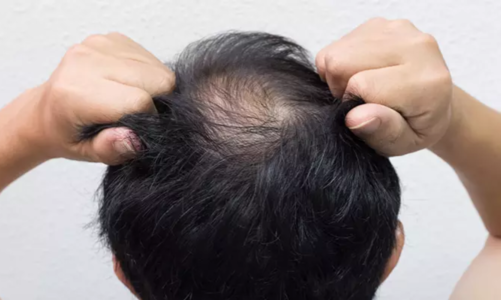It is evident that the media often ridicules celebrities for both their achievements and missteps related to cosmetic surgery. In your view, what elements contribute to the unsatisfactory outcomes of these procedures, or what factors might indicate these less-than-ideal results?
The answer is quite clear: appearance plays a crucial role in the selection of cosmetic surgery. If the results do not appear natural, all efforts are rendered futile. Therefore, the success of your cosmetic surgery is heavily reliant on the qualifications and expertise of the surgeon you choose.
Similarly, hair transplant surgeries can yield natural-looking results when the hairline is designed with careful consideration. If you desire a hair transplant that appears authentic, it is essential to seek out a surgeon renowned for their artistic skills.
Individuals from various parts of the globe are increasingly traveling to Delhi for hair transplants, as the city has made remarkable advancements in this field. The top surgeons for hair transplant in Delhi have successfully built a reputation for delivering exceptional results. Additionally, the relatively affordable hair transplant cost in Delhi attracts international patients.
One prominent hair transplant surgeon in India, celebrated for his outstanding artistic talent, is Dr. Suneet Soni. He is particularly favored by celebrities, as he consistently delivers hair transplants that result in aesthetically pleasing hairlines. The Medispa hair transplant clinic is recognized as a leader in providing top-tier hair transplant services and facilities worldwide.
What causes a hairline to recede?
Regular hair loss to a certain extent is a common occurrence that is typically balanced by the growth of new hair. However, a receding hairline or increased hair loss may manifest when the rate of hair shedding exceeds that of hair regeneration.
There are several potential causes for a receding hairline, including:
1. Genetic factors: A receding hairline can be hereditary, stemming from the increased sensitivity of hair follicles to androgenic hormones. This heightened sensitivity primarily affects DHT-sensitive hair follicles located in the frontal and vertex areas of the scalp. Unfortunately, if this is the case, you may pass on the tendency for a receding hairline to future generations.
2. Hormonal fluctuations: Changes in hormone levels can lead to hair loss and a receding hairline, particularly in hair follicles that are sensitive to these hormonal shifts.
3. Traction alopecia: This condition often affects women who frequently wear tight hairstyles, such as braids, which can cause persistent pulling on the hair and lead to hair loss.
4. Hair styling products: Many women regularly utilize styling tools, including chemical straighteners and heated devices, which may contribute to the development of a receding hairline.
5. Mature hairline: This term refers to the natural cessation of hairline growth that occurs as individuals age.
What is hair transplant?
Hair transplant cosmetic procedures aim to effectively conceal bald areas by relocating hair follicles from a donor site to the affected region. It is essential that the selected donor area contains hair follicles that are resistant to DHT; these can be sourced from body hair or, preferably, from the back and sides of the scalp. The donor site must possess an adequate quantity of hair follicles to ensure a satisfactory and aesthetically pleasing coverage. The hair transplant procedure is intricate and requires meticulous attention to detail throughout each phase. The success of the hair transplant largely depends on the density of hair in the donor area. This technique essentially transfers existing hair follicles from the donor site to the recipient area, rather than generating new ones.
How to get natural hairline design by Hair Restoration surgery?
You can rely on your surgeon to take into account the following factors to achieve a natural-looking hairline, provided you have selected a skilled and reputable surgeon along with a technologically advanced clinic:
- Correct angulation of hair follicles: Individuals exhibit unique patterns of hair angulation. In the donor area, the hair follicles must be angled appropriately. Each hair in a natural hairline is oriented in a specific direction, necessitating the creation of slits that accommodate the correct angulation of hair grafts during transplantation.
- Randomized arrangement of hair grafts: This error is often committed by inexperienced or inadequately trained hair surgeons, who tend to position hair follicles in a straight line, resulting in an unnatural, doll-like or wig-like appearance. The natural hairline features an irregular zigzag pattern rather than a linear one. A proficient hair transplant surgeon will utilize this understanding when designing the hairline.
- Strategic placement of hair grafts: Thicker hair grafts should be positioned along the back lines, while thinner grafts are best suited for the front and around the temporal areas. This approach not only enhances coverage of the balding area but also contributes to a more natural-looking hairline. The hairline should transition smoothly rather than having abrupt starts or stops, with single grafts applied in a zigzag pattern in the front rows and double or triple-rooted grafts placed in the back rows.
- Focus on the Extended Hairline Zone: The presence of an extended hairline zone that descends below the traditional hairline is vital for achieving favorable cosmetic outcomes in hair transplantation. This extended hairline zone plays a key role in creating a natural appearance; however, many surgeons tend to prioritize the frontal line or transition zone. The extended hairline zone comprises three distinct areas: the transition zone, the defined zone, and the frontal tufts. In the transition zone, it is essential to implement a sparse, soft, and zigzag pattern. The defined zone requires denser and fuller grafts, while the frontal tufts necessitate a concentrated placement of grafts for optimal density.
Consequently, the design of the hairline can be likened to the art of painting, where each stroke is significant and differentiates a remarkable artwork from a mere outline. Therefore, for those seeking a natural-looking hairline through hair restoration, selecting a proficient surgeon with extensive expertise, a solid understanding of hairline design, and favorable patient testimonials, such as Dr. Suneet Soni from the Medispa Hair Transplant Clinic, may prove to be an excellent option.




